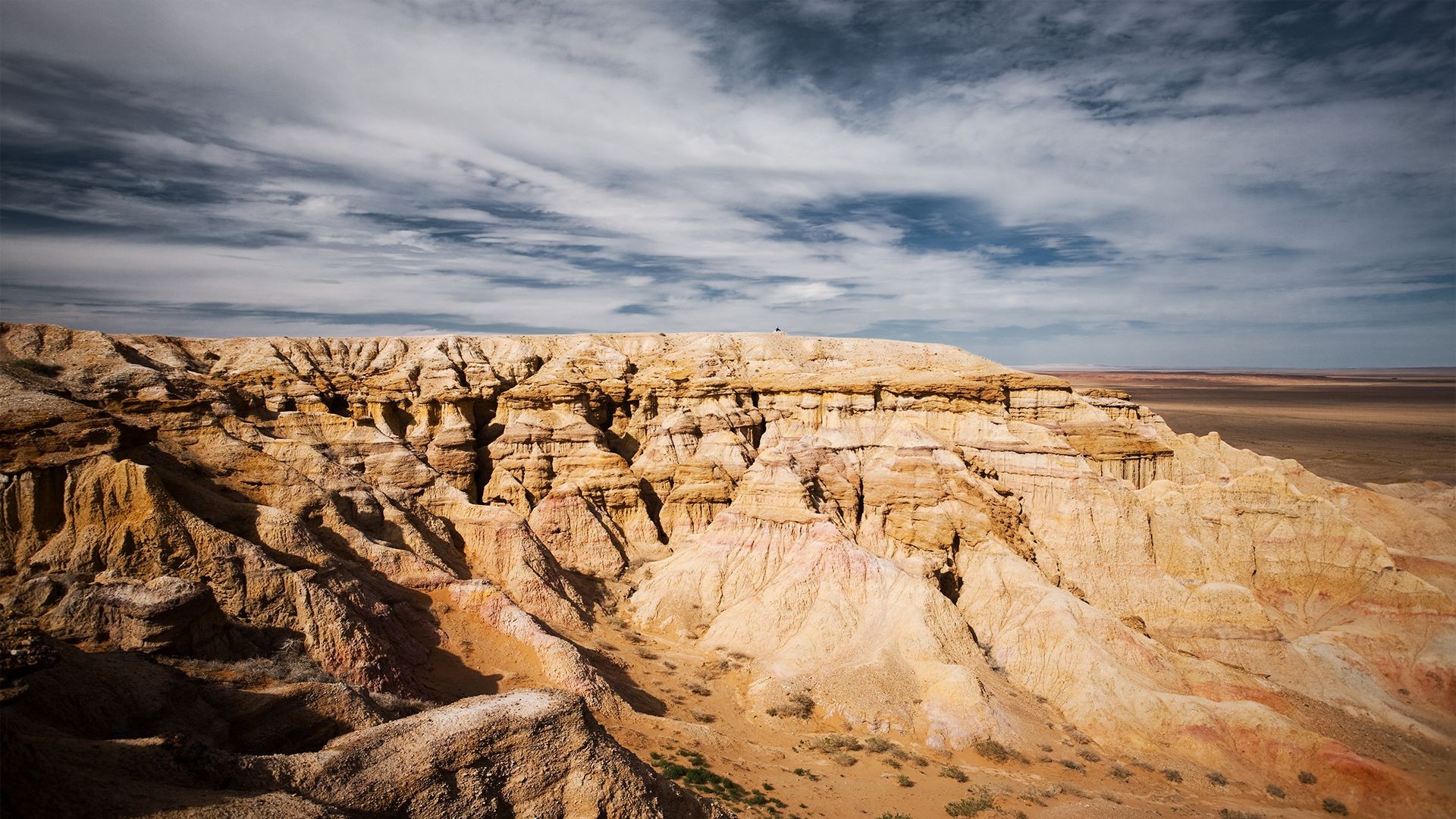
Details
- Flaming Cliffs (Bayanzag)
- Yol valley
- Singing sand dunes (Khongor)
- Camel riding
- Ongi monastery
- White stupa
- Baga gazriin chuluu
- Ikh gazriin chuluu
Southern Mongolia is undoubtedly dominated by the Great Gobi Desert, covering roughly 30% of the entire Mongolian territory.
The Gobi is a truly enchanting region, ever-changing with the seasons. In the summer, the Gobi turns green, with fantastic wide carpets of flowers of all colors. In the winter, The Gobi turns into one of very few places where one can see sand dunes all covered in Snow.
The Gobi is one of the world's least densely populated regions, with nomadic families living far apart, much due to the lack of water resources and good grazing areas. Many of these nomads have been herding Bactrian camels traditionally, and large herds can still be seen today, gently walking along the vast plains. However, the region is currently under huge threat of overgrazing due to a rapid and massive increase in herds of goats to provide for the cashmere industry.
Another huge threat to the fragile eco-system derived from the developing mining industry which poses significant constrains on the scarce water sources, as well as other environmental threats caused by the mines themselves, the huge settlements built around them, and the tens-of-thousands of heavy truck transporting coal and other mineral resources harvested from deep below the desert’s surface.
Our Gobi desert tours feature unique landscapes and sites, amidst them is Yolin Am- a beautiful oasis deep in the Gurvansaikhan (“The three beauties”) mountain range, which up until late June is still frozen, boasting a unique phenomenon of “glacier in the desert”. Other sites of interest are Khongoryn Els towering sand dunes, and Bayan Zag- a beautiful site of red sandstone formation, known not only for its beauty but also as the place where the American explorer Roy Chapman Andrews, who some claim is the true inspiration for the Hollywood character Indiana Jones, have discovered the world’s first fossil dinosaur eggs, putting an end to ages long disputes amid scientists on whether dinosaurs been mammals or reptiles.
The Gobi desert is best visited during late spring (May-June) or early in the autumn (September-October) before the chilling winter takes over, and after the summer hit has subsided.
We welcome you to choose one of our Gobi Desert tours for once in a lifetime experience.

Related Tours

